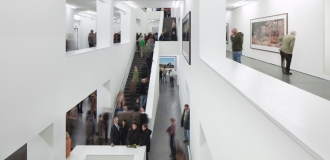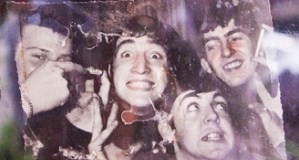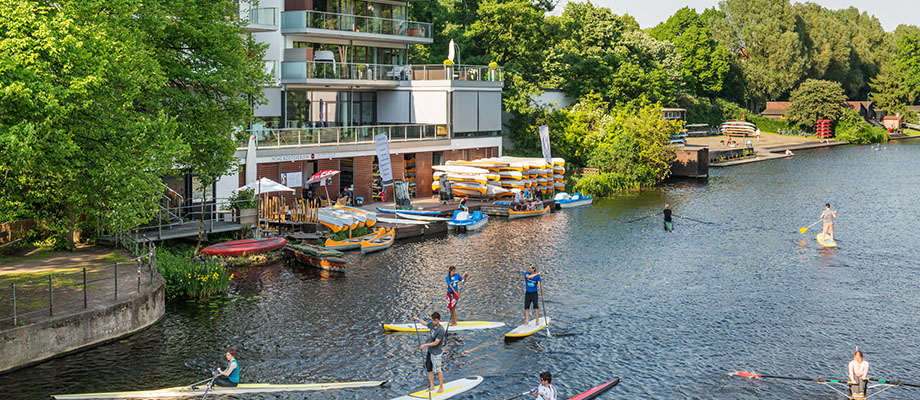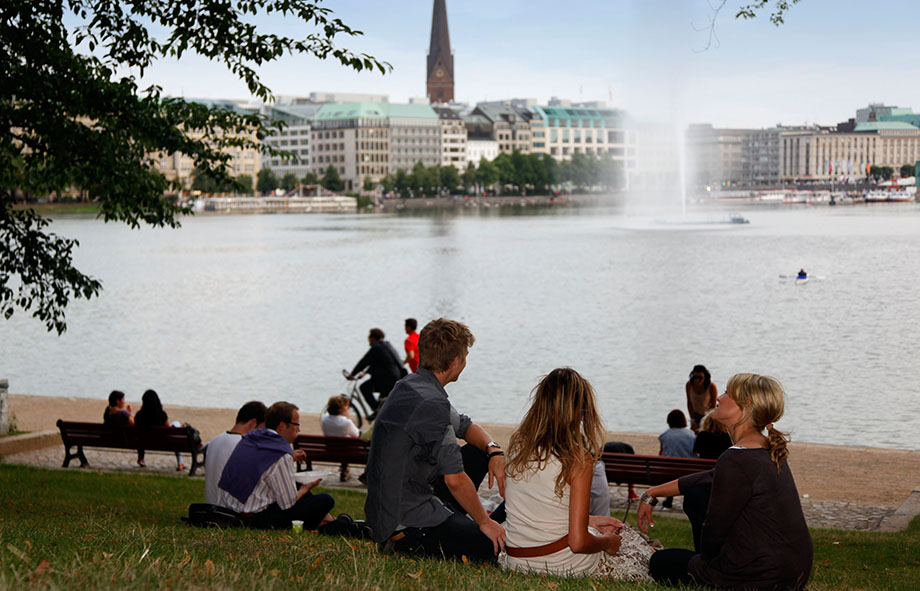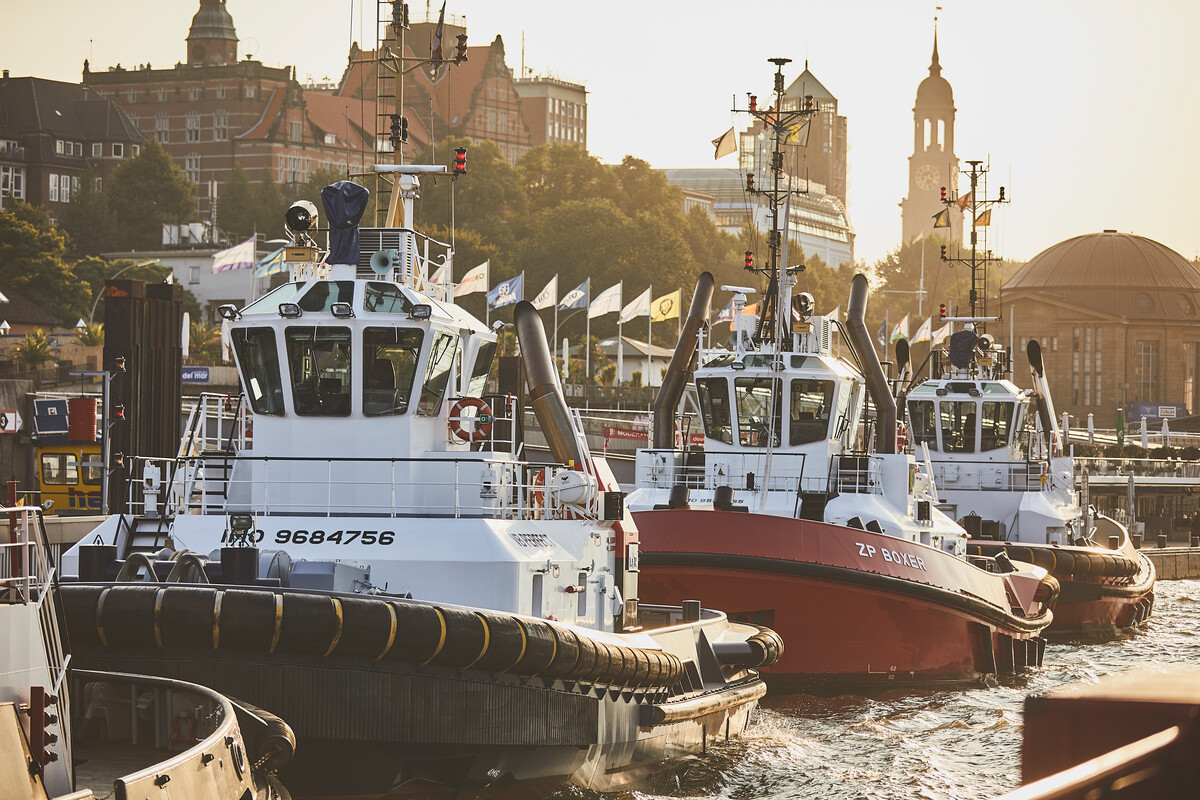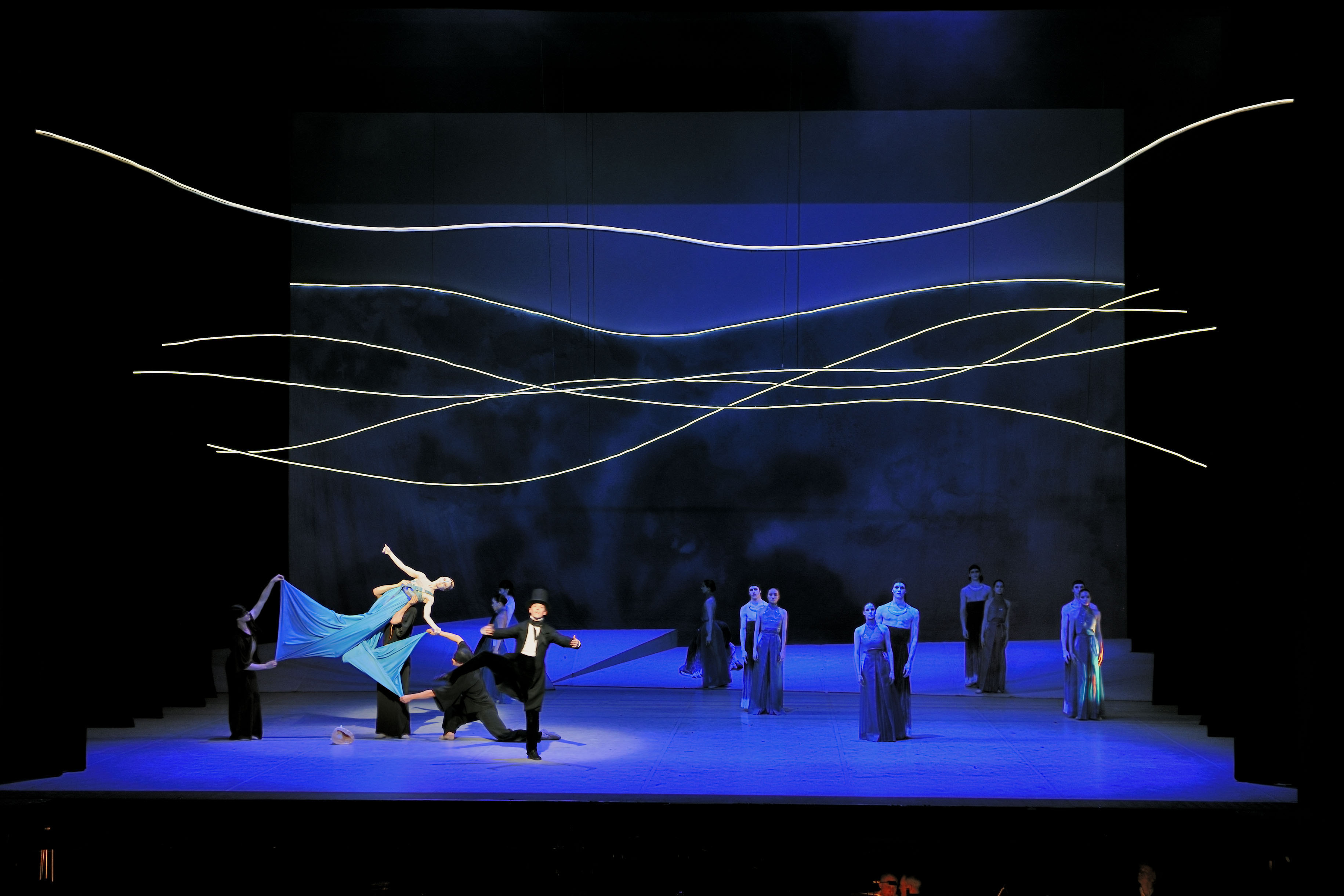Off-Spaces for Arts & Culture
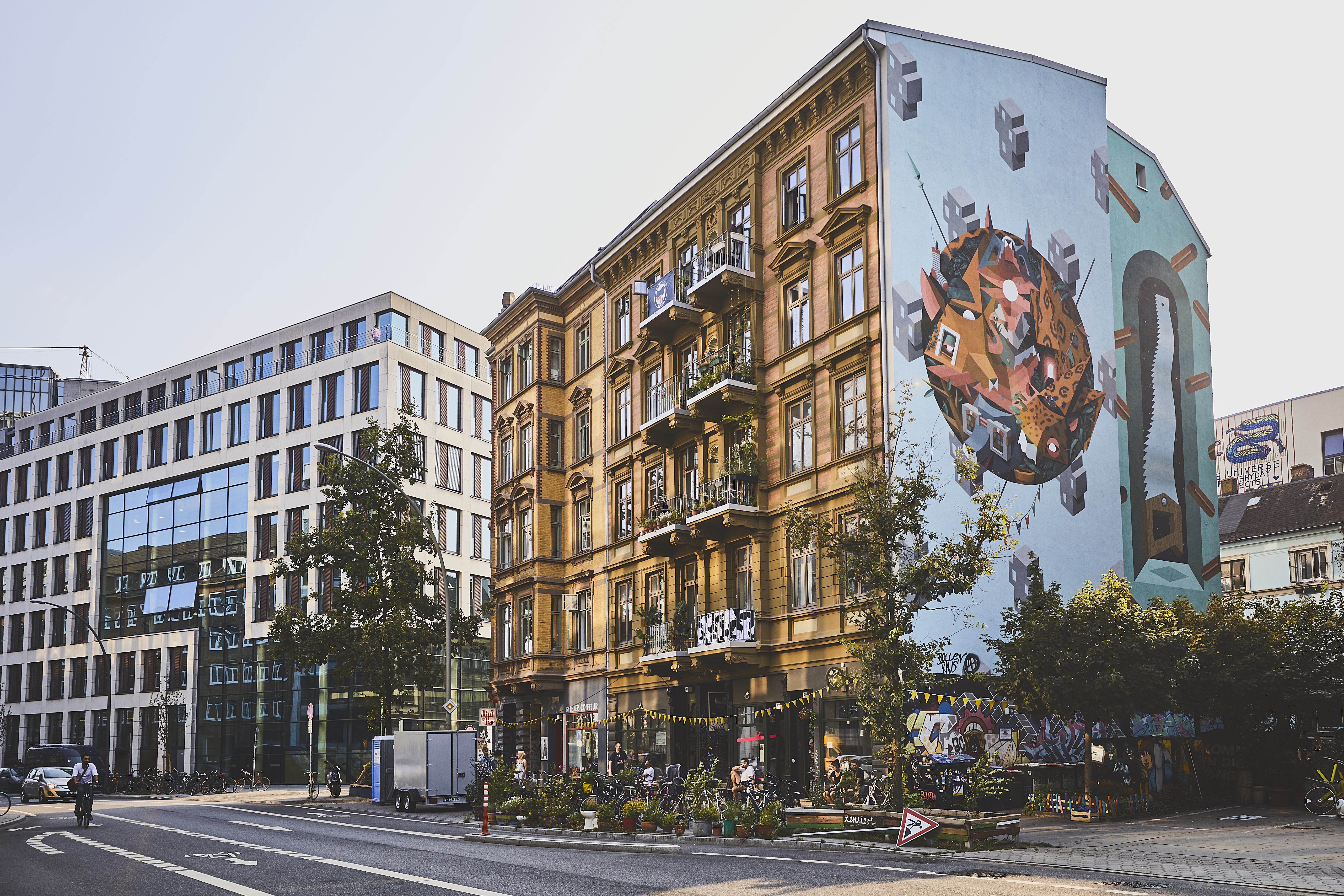
Hamburg is primarily known for its thriving economy, its popular musical productions and cultural institutions such as the Thalia Theater, the Hamburg State Opera and the Deichtorhallen. And yet, alongside the city’s splendour, a colourful, alternative and rebellious art and cultural scene is evolving in Hamburg’s independent art spaces – sometimes even with the support of the city.
The long corridors of the Viktoria barracks in Altona are lined with colourful papier-mâché artworks, paintings and photographs – mementos of the five years of creative use of the building. And yet the artists behind the dark red-brick façade of the former infantry barracks from the 19th century do not work behind closed doors – quite the contrary: under the umbrella of Frappant, they regularly host public art exhibitions, parties, concerts, film screenings, as well as “Fraplab” art workshops and flea markets.
Frappant: from military barracks to culture centre
2010 around 140 members of the artists’ collective Frappant moved from their workshops in Grosse Bergstrasse to this “Wilhelmine fortress” after their former domicile, a derelict Karstadt department store, had to give way for a new Ikea branch. While the new premises were initially regarded as a temporary solution, the Viktoria barracks have now turned into a permanent home: the City of Hamburg has sold the barracks to Fux eG, a cooperative that includes Frappant and local association “Lux & Konsorten”, an NGO that campaigns for affordable office space. The success of this venture was celebrated in February 2015 with sparkling wine and soup. After some time of toing and froing, the Senate presented an attractive offer to this cooperative, which had been established for the purpose of the acquisition.
As a result of this deal, the historic barracks will soon leave their sombre appearance behind. The listed building is supposed to be fully renovated by 2020, and the Hamburg Senate will support the renovation works to the tune of 400,000 euro. What is more, Frappant is also planning to expand its usage area: the studio and exhibition spaces will be further extended, and a carpenter’s workshop will be built in the courtyard of the building. A hairdresser’s, a bicycle repair shop, a dance studio and a canteen are also in the planning stages. Once completed, the artists’ usage space will increase from 4,000 m2 to 10,000 m2.
Hamburg’s off-scene is firmly rooted in the city
While Frappant is certainly a unique venue, it is not the only one of its kind. Cultural networking and resistance against the establishment are also alive and kicking in the St.-Pauli-Hafenstrasse, the Rote Flora (Schanzenviertel), the Gängeviertel (Neustadt) and the Oberhafen quarter on the edge of the HafenCity district. At the same time, some of the fresh inspiration and trends evolving from the city’s off-scene ultimately find their way into Hamburg's established cultural institutions: the socio-critical impetus has influenced the programmes of the Thalia Theater, the Schauspielhaus and Kampnagel, and the Hamburger Kunsthalle sometimes cooperates with alternative artists. Hamburg’s off-scene does not operate in complete isolation from the established cultural landscape – to the contrary: the city’s different spheres are merging.
Back in the 1980s, the St.-Pauli-Hafenstrasse was occupied in protest against plans by the Hamburg Senate to establish a business district with high-rise office towers directly on the Elbe, which ultimately resulted in bloody house-to-house combat. The city has learnt from that experience and is now more willing to accept certain claims for buildings – and sometimes even actively supports such claims. The story of the peaceful settlement in the Gängeviertel may serve as an example for this policy.
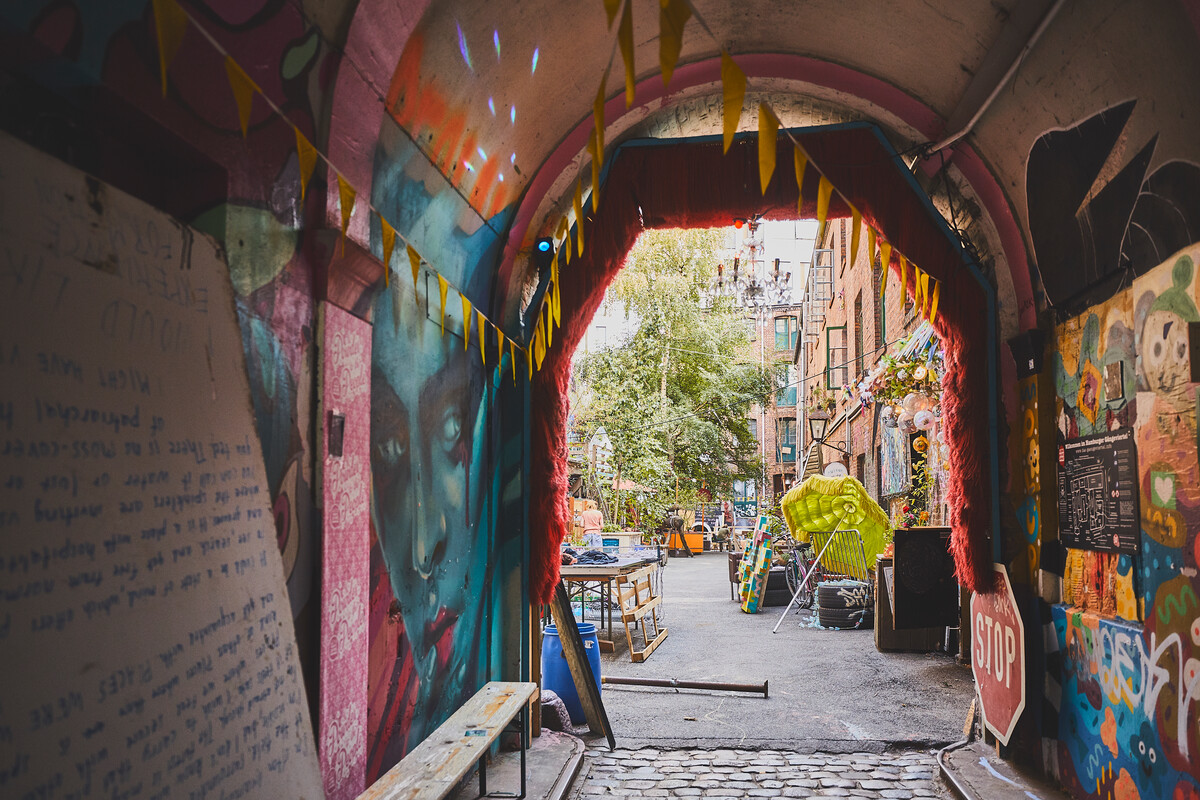
The Gängeviertel: a Gallic village in Hamburg
An archway between tall glass and concrete buildings in the busy Neustadt leads you to quite a different world: the Gängeviertel. For almost six years now, the twelve historic buildings between Valentinskamp, Caffamacherreihe and Speckstrasse have been bustling with cultural life. The plaster on the walls of these houses is deteriorating and large installations can be seen on every corner. The centre piece of this alternative quarter is the old factory on Valentinskamp. It hosts concerts, exhibitions, performances, book readings and discussions on urban development and other socio-political themes. The “Galerie Speckstrasse” and the “Raum linksrechts” exhibition venues showcase the works of various artists, and in the bar of the “Jupihaus”, guests pay what they think is appropriate for their drinks.
The Gängeviertel was declared a Gallic village in the summer of 2009, when artists and activists threw a party as a means of peaceful resistance against the concept of a Dutch investor who was seeking to build yet another office complex on the premises. The backyard party, which also included a cultural programme, marked the beginning of the occupation of this former working-class neighbourhood. The aim was to renovate and self-manage the buildings involved and to provide affordable accommodation and workspaces for artists.
The Gängeviertel campaign received broad support from the general public, and four months after the peaceful settlement, the Hamburg Senate repurchased the building ensemble from the Dutch investor. Meanwhile, the buildings are being renovated by the Steg Hamburg mbH, supported with funding from the Investment and Development Bank Hamburg (IFB). The Gängeviertel will continue to be a hive of cultural life also during the course of the renovations works.
Oberhafen: ample space for alternative ideas
Since 2012, alternative ideas have also been flourishing in the Oberhafen quarter between old warehouses, derelict railway tracks and stumbly cobblestone streets. This off-scene venue gained momentum when artists from the Gängeviertel temporarily moved to the Alte Bahnmeisterei during construction works on their Gängeviertel domicile. Today, the picket fences of this historic building are colourfully painted and all sorts of odds and ends are dangling from the trees. On the north-western edge of the Oberhafen quarter, the “Island” in the Fruchthof serves, among other things, as a rental space for artists and office to “Here We Go”, a Hamburg-based creative studio. In Hall 3 of the Oberhafen quarter, Jens Gottschau and Petra Sommer run their Hanseatische Materialverwaltung, a storage area for sets and props that are no longer used by film and theatre productions and that are rented out to schools and artists for small fees. From here, the “Moloch” is only a stone’s throw away – a wooden shack that serves as a venue for exuberant outdoor parties during the summer.
The Oberhafen area is owned by the City of Hamburg and comprises approximately 6,000 square metres centred around a former freight depot. At first glance you might not see a difference between the Oberhafen quarter and other alternative projects such as Frappant or the Gängeviertel – and yet there is one specific difference: the idea of using the former port area for creative purposes was not attributable to the commitment of alternative artists, but to the Hamburg Senate itself. The area is managed by Hamburger Kreativgesellschaft and the HafenCity GmbH. Situated in close proximity to the central train station and Hamburg’s city centre, the Oberhafen quarter is also a planned impetus for the nearby HafenCity district. And it certainly demonstrates the fact that the city has come to realise how a thriving cultural scene can enhance the quality of life in a metropolitan region such as Hamburg.
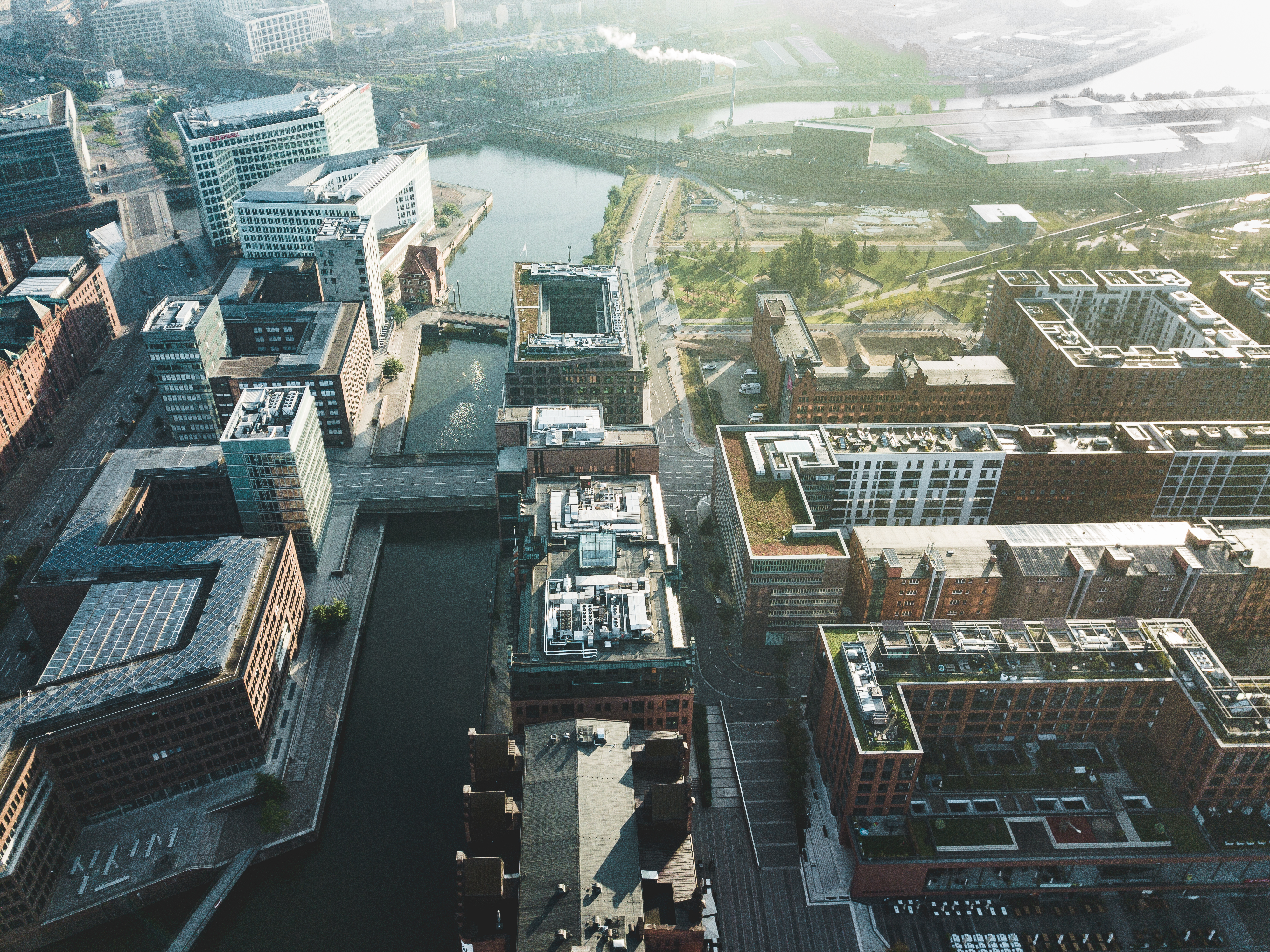

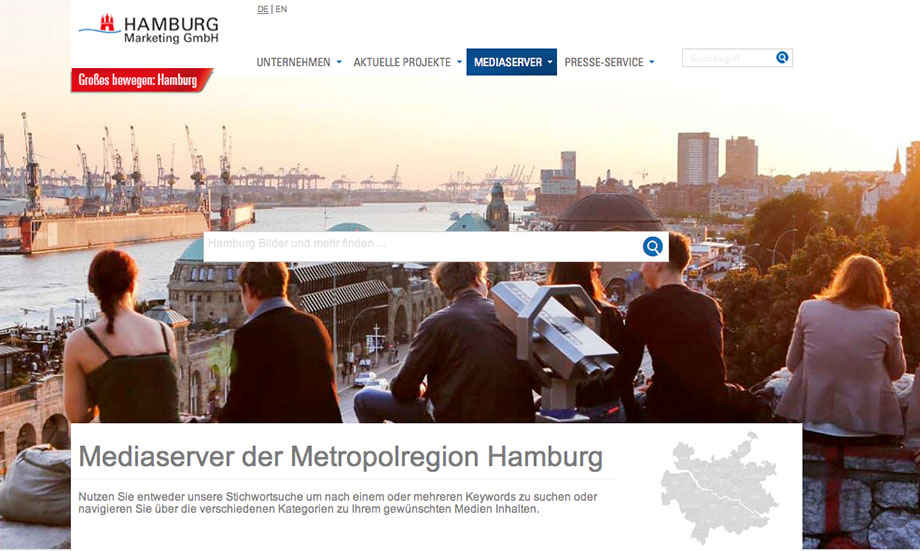


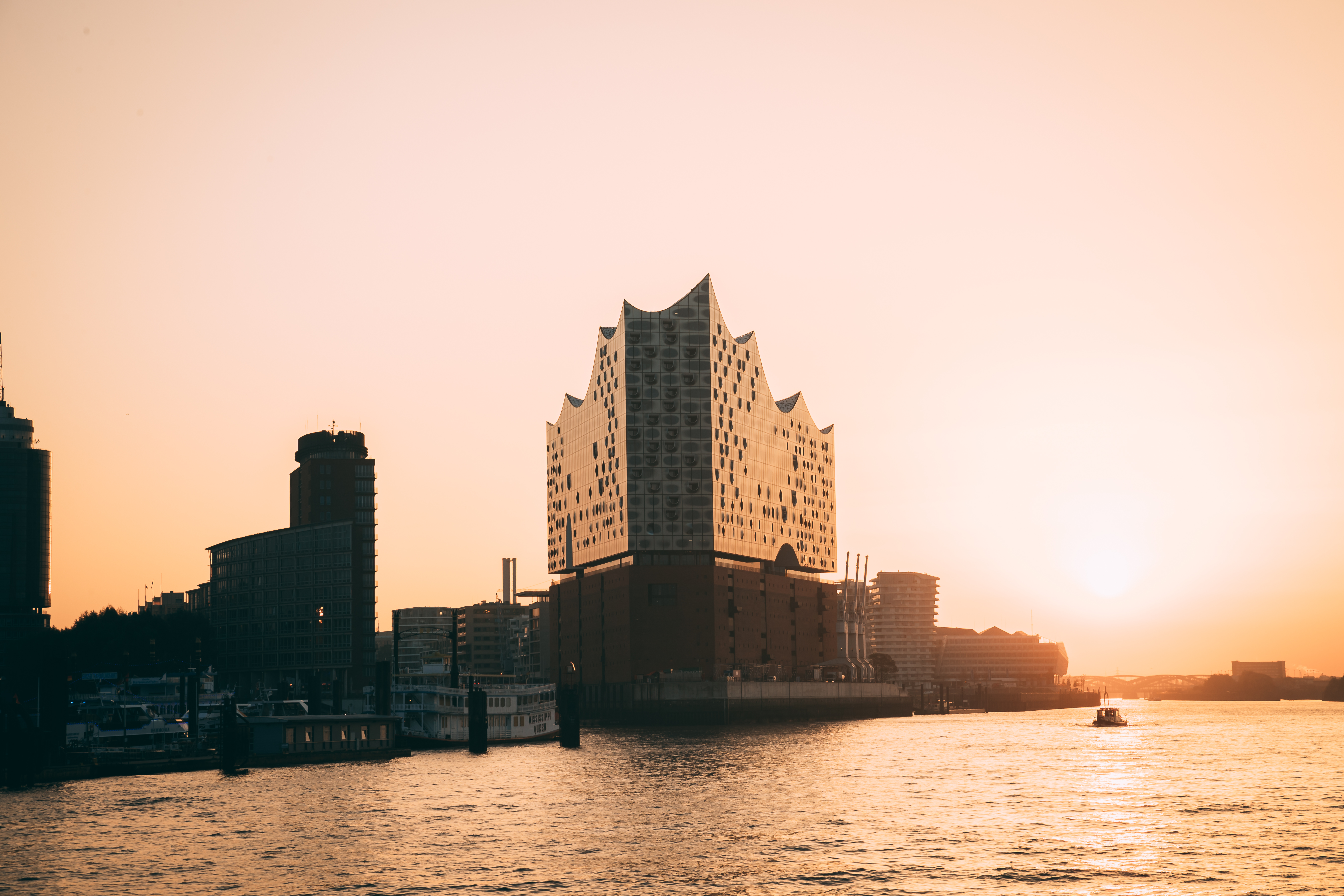
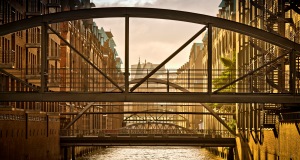

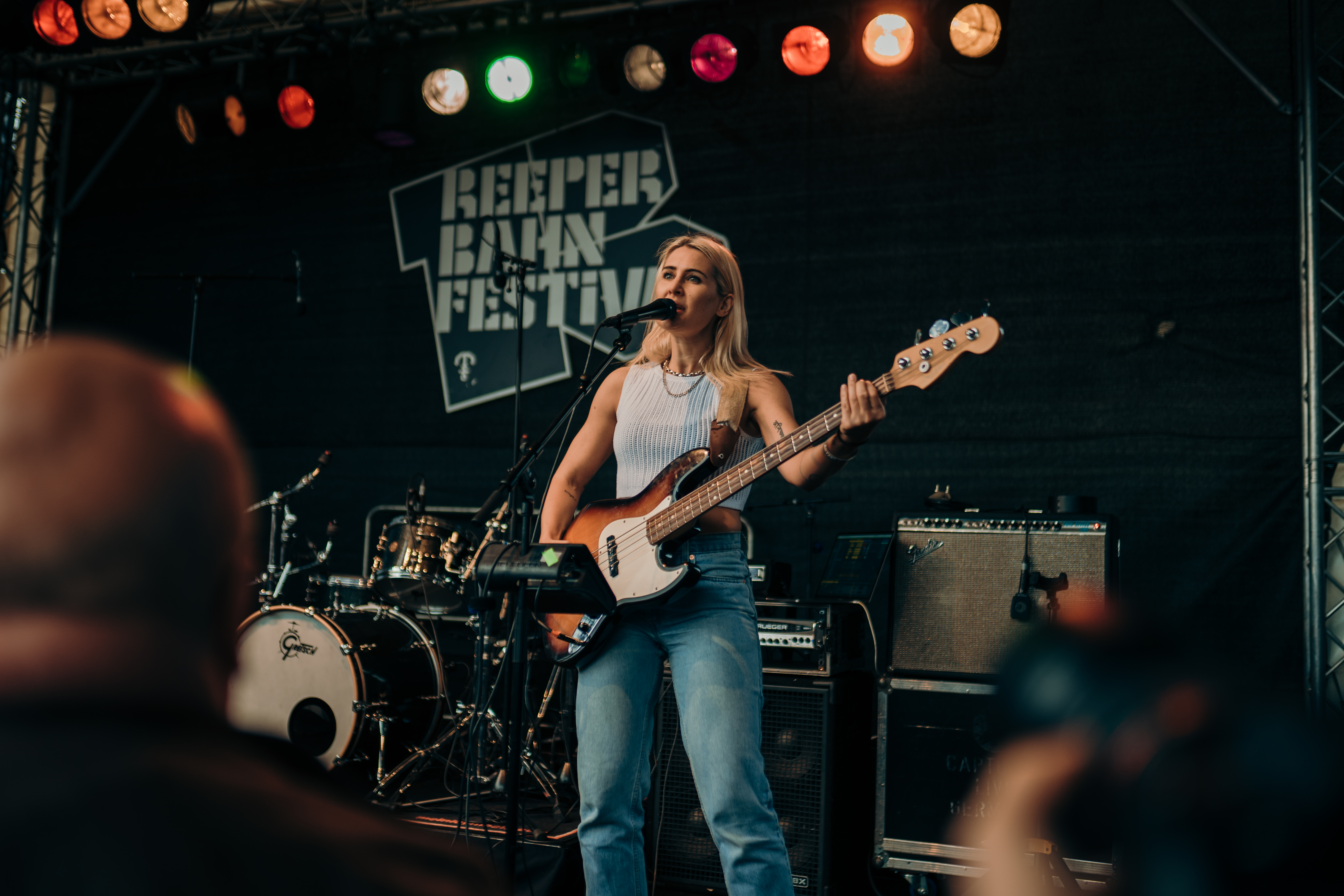
.jpg)

